The Planet Venus
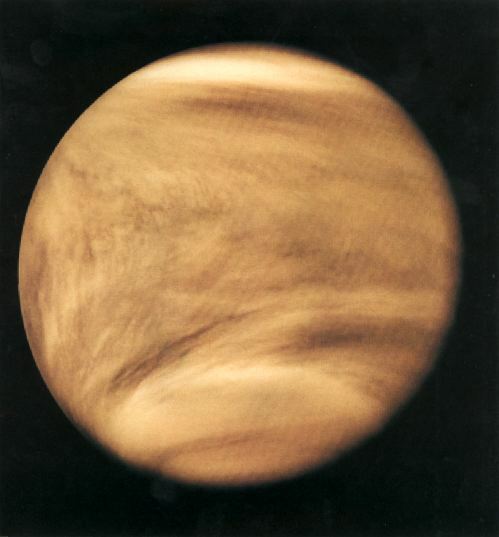
Venus is often called the twin planet to Earth because 1) it has a similar radius/size, 2) is has a similar mass, 3) it has a similar density and 4) it has an atmosphere. However, the environment of Venus is very different from the Earth.
It also has the somewhat unusual property of
not rotating (or rotating extremely slow, like once every 243 days). This slow rotation
is a consequence of billions of years of tidal forces operating on the dense atmosphere causing
the rotation rate of the atmosphere to slow down with time. In turn, the frictional drag
exerted by the atmosphere onto the surface, slows the overall planetary rotation down to
a crawl.
The main problem with probing Venus is simply that its completely covered with
clouds and a very thick atmosphere so that its surface is completely obscured.
The Soviet Union's Venera 8 and 9 missions (1975) represent the only landings on the Venusian surface. As this surface has a temperature of about 450 Farenheit and is constanly raining sulfuric acid, these spacecraft did not function long. The return images show the base of the spacecraft and a bunch of rocks
However, radar can penetrate this atmosphere and return a map of topographic
features.
Differences in radar timing at different locations represent different elevations. In this way radar imaging can build up a toplogical map of Venus.
Much of our knowledge of Venus is now based on such data as gathered
by the The Magellan Mission to Venus
The radar mosiac is shown below. The effective resolution of this image is about 3 kilometers. It was processed to improve contrast and to emphasize small features, and was color-coded to represent elevation.
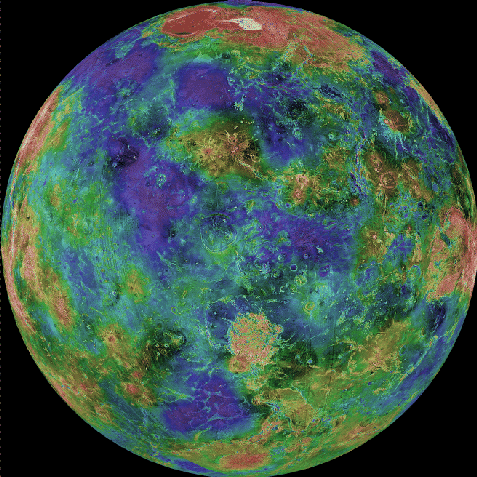
The overall geological and structural features of Venus are the following:
- Its density is 5.2 g/cc meaning that it must also have a relatively large
nickel-iron core.
- This nickel iron-core creates a magnetic field with similar's strength as that
of the Earth. . The core is surrounded by
a substance similar to the Earth's mantle. The crust of Venus appears to be thicker
than the Earth's crust.
- There is a substantial atmosphere on venus, with average atmospheric pressure about
90 times higher than the Earth's. The surface temperature of Venus is around 890 degrees F, the hottest average temperature in the Solar System. This is due to a runaway greenhouse effect. The atmosphere of Venus is composed of 97% CO2, 2% N2 and less than 1% of O2, H2O and CH4 (methane). Since CO2 is a major greenhouse gas, the radiation from the Sun is trapped in the atmosphere of Venus producing an extremely high surface temperature.
- There is clear evidence of impact craters - though the actual density of craters shows
that Venus has a relatively young surface and many of the older craters have been
eroded away:
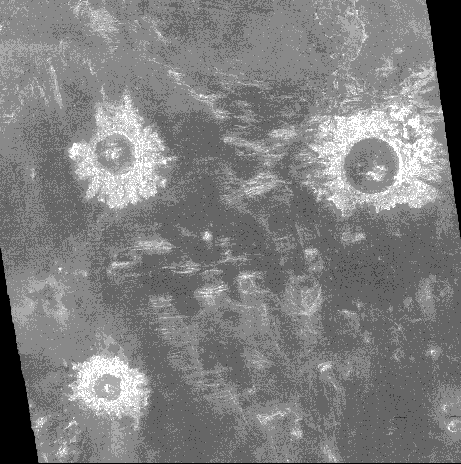
- Substantial vulcanism exists with some volcanoes appearing like tectonic volcanoes
lineup (e.g. the Hawaiian Islands). The image below shows a good example of a chain
of shield volcanoes:
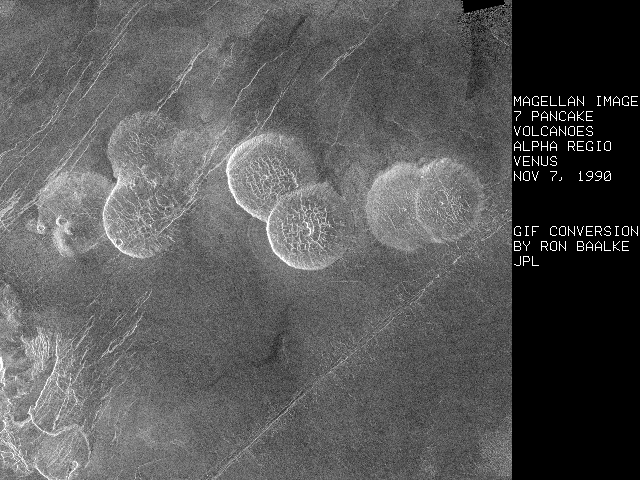
- Venus has an impressive array of fault lines. In the image below, the bright terrain is a series of troughs, ridges, and faults that are oriented in many directions. The lengths of these features generally range from 10 kilometers to 50 kilometers.
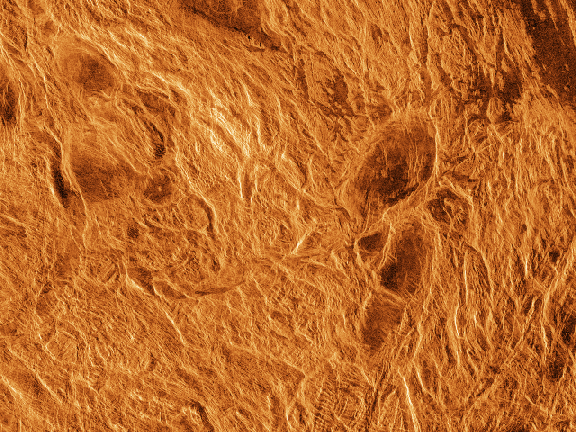
- Venus also has some strange surface features known as arachnoids (like a spider).
As the name suggests, arachnoids are circular to ovoid features with concentric rings and a complex network of fractures extending outward. The arachnoids range in size from approximately 50 kilometers to 230 kilometers in diameter. They might have resulted from an upwelling of magma from the interior of the planet which pushed up the surface to form "cracks".
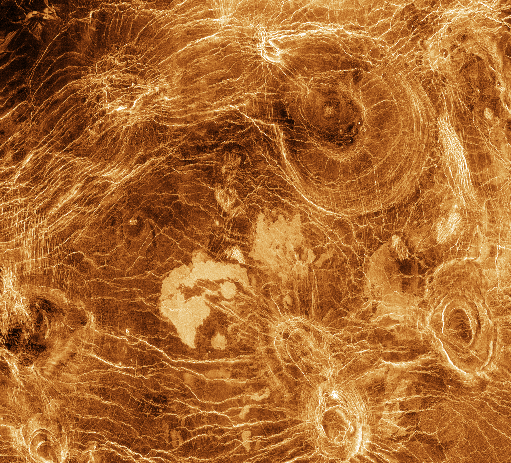
- Although Venus appears to have some "tectonic" features (like continents and linear
chains of volcanoes) there is no strong
evidence for any current volcanic activity.
Based on the various radar data and resulting surface features, we can provide the following
quick synopsis of Geology on Venus:
- There are no regions on Venus with saturated impact sites although there are some regions of fairly high crater density
- The surface is clearly young and active geology may be still be occurring. Some estimates are that lava flows data as recently as 300-500 million years ago but this is mostly conjecture.
- There are large scale uplifted regions above lower lying regions. The hemisphereic topographic maps strongly support the idea that Venus has been involved in some kind of continent building activity.
- There are features that look like large shield Volcanoes and giant calderas.
- Radar Bright features associated with large craters may be reflective of an explosive volcanic event that has locally shattered the crust.






